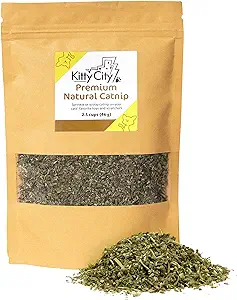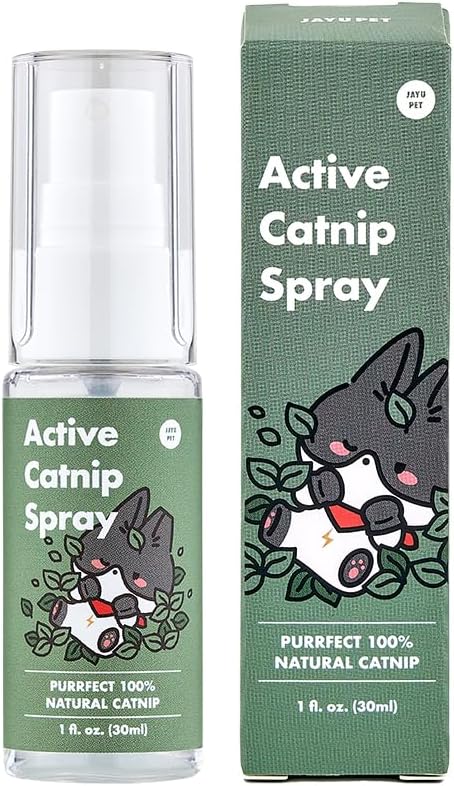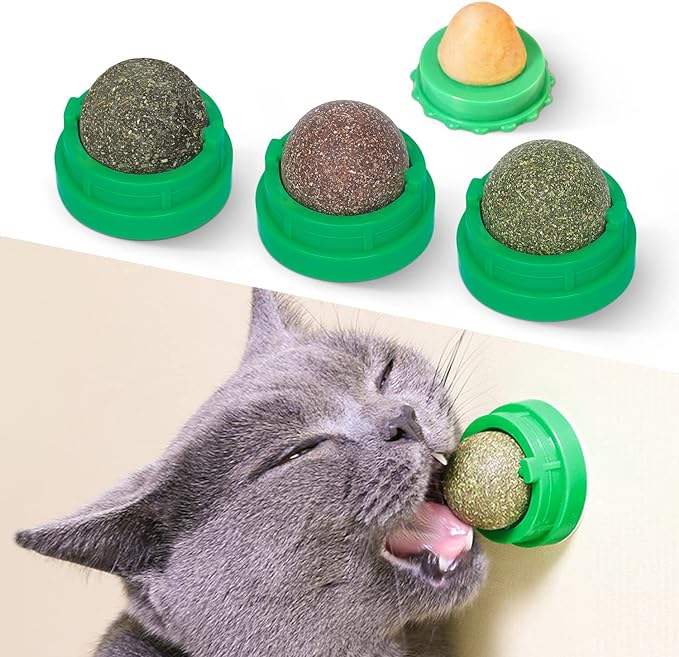Have you ever watched a cat encounter a pinch of catnip? Their usual composed demeanor transforms, showcasing everything from mirthful somersaults to serene bliss. But what’s the deal with cats and catnip, really? I’m going to help you understand this quirky phenomenon.
First off, catnip, scientifically known as Nepeta cataria, isn’t a recent discovery. People have noted its effects on domestic cats for centuries. The herb is a member of the mint family and proliferates in gardens worldwide, often without any human cultivation. The secret to catnip’s feline allure lies in the volatile oil it contains: nepetalactone.
When it comes to the ‘nip and cat dynamic, it’s worth mentioning that not all cats are spellbound by this herb. In fact, sensitivity to catnip is hereditary, with about two-thirds of the cat population being genetically predisposed to the catnip crazies. For those cats that do feel the effects, their behaviors can range from rolling and rubbing against the plant to animated playfulness and loud vocalizations.
To wrap your head around the full extent of this feline-herb interaction, consider this: the response is often as diverse as the variety of cat personalities and the various strains of catnip available. Some cats may be drawn to rubbing their faces on it, while others might ingest it, each leading to a slightly different reaction.
So now, with a basic grasp of catnip’s bewitching power, you might be curious about the science behind it. How exactly does this unassuming plant cast such a spell on our feline companions? Stay tuned as we delve into the heart of catnip’s magnetic draw on cats, exploring the science that deciphers these whimsical behaviors.
Unraveling the Mystery: How Catnip Affects Cats
I’m going to pull back the curtain on the science behind why your cat may flip, jump, and zoom around the house after a catnip treat. It’s all about a special ingredient called nepetalactone, a compound found in the leaves and stems of the catnip plant.
You’re going to find out about the genetics too; not all cats respond to catnip. It’s estimated that about 50% to 70% of cats feel the effects, which is down to a hereditary gene. If a cat doesn’t inherit this gene, catnip might just be another leaf to them.
I’m here to help you understand what’s going on in your feline friend’s brain when they come into contact with catnip. Nepetalactone triggers a neural response, replicating the effects of happy pheromones and typically resulting in a euphoric state for your cat.
This isn’t just about a brief encounter. The effects of catnip typically last around 10 to 15 minutes, after which your cat may become immune to its effects for a while. This temporary immunity is why short-term exposure is often more exciting than frequent, prolonged exposures.
Now, you might wonder if there are any health benefits or risks you need to consider. In moderate amounts, catnip is generally seen as safe and can even encourage exercise and relieve stress in cats. However, moderation is key, as too much might cause digestive upset.
That leads us to the next part of our journey – practical ways to use catnip and things to watch out for, especially if you’re looking to incorporate it as a regular part of your cat’s life.
Beyond the Buzz: Catnip’s Practical Uses and Considerations
Now that you understand how catnip affects your feline friends, let’s talk about practical ways to use this knowledge. Introducing catnip to your cat’s environment can be hugely beneficial, from providing mental stimulation to encouraging exercise through play. Choose something that resonates with you and your pet’s personalities and needs.
When it comes to the appropriate amount of catnip, less is often more. You can always adjust your approach down the road, but starting with small doses can help you gauge your cat’s reaction without overwhelming them. Whether it’s a sprinkle on their scratching post or a catnip-filled toy, observing your cat’s response will guide your next steps.
Not all cats are head-over-heels for catnip, and that’s totally fine. For those who don’t seem to be affected, there are alternatives like silver vine or honeysuckle that might stimulate a similar reaction. Don’t worry too much about the catnip itself—focus on the joy of interaction and play with your cat.
In households with multiple cats, incorporating catnip can be a bit of a balancing act. It’s important to monitor your pets to ensure they all have a positive experience and to prevent any potential conflict that may arise from the heightened excitement.
Your first attempt at introducing catnip doesn’t need to be your last. There’s a lot of opportunity in experimenting with different forms and varieties to see what your cat prefers. And remember, kittens and senior cats might have different sensitivities, so consulting with a vet before introducing catnip can provide peace of mind.
In my opinion, the key takeaway here is to use catnip as a tool for engagement and happiness in your cat’s life. It’s not just about the temporary euphoria it can elicit; it’s also about enriching your cat’s day-to-day experiences. Have fun with it, and I really hope that you and your cat find your perfect balance.
Here are some recommendations if you’d like to give your cat a treat.

Kitty City Cat Premium Natural Catnip
With 2.5 cups of all-natural catnip, you can keep the fun going for months on end. And it all comes in a resealable bag to preserve the freshness. Store the bag in a cool, dry place for maximum lifespan.

Active Catnip Spray – High Potency Transparent Liquid Spray
Nepetalactone, an essential oil found in the catnip plant, stimulates the cat’s nerve which triggers a euphoric reaction. It also helps to reduce stress, anxiety, and depression for cats. This magical catnip spray will make your cat roll, flip, rub, and zoning out every day!

Potaroma Catnip Toys Balls 4 Pcs, Extra Cat Energy Ball
100% Natural and Non-toxic: the catnip balls are made of pure natural plant extracts, no chemical additives contained. Rest assured this toy is no harm to your favorite kitty.


